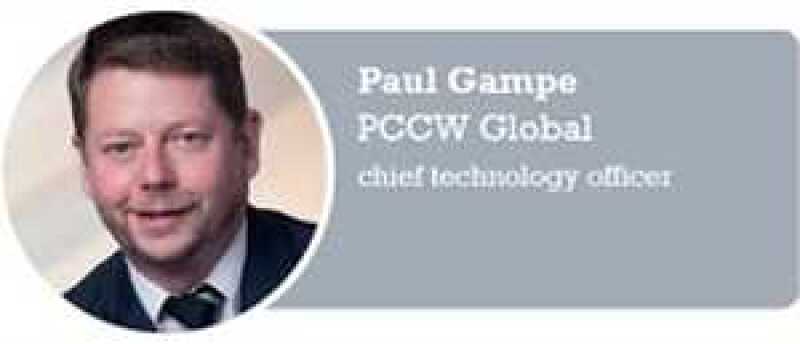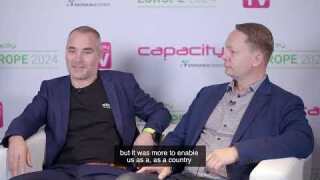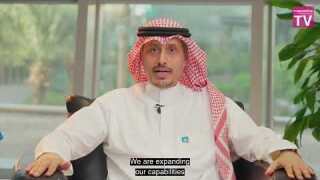46527
VENDORS

Sunil Khandekar, Nuage Networks, founder and CEO
Khandekar founded Nuage Networks, then a wholly owned subsidiary of Alcatel-Lucent, where he came up with a very simple idea that is prophetic today. He envisioned SDN to connect users to applications independent of where the application was hosted and the user’s location. While technology vendors created SDN solutions exclusively for data centres, Khandekar led Nuage Networks to extend SDN principles beyond the boundaries of the data centre. Today, Nuage Networks offers an end-to-end multi-cloud solution extending connectivity within the data centre or public clouds to branch offices from a single point of visibility and control, with notable customers such as BT, Vodafone, Telefónica and China Mobile.

Erik Ekudden, Ericsson, chief technology officer
Ekudden was named as CTO for Ericsson back in May 2017, at which time his focus was on building the network platform of the future to enable new business models. Since assuming the role, the company has won the award for best NFV/SDN solution at the 2018 5G MENA awards. Ericsson won the title for introducing a pre-integrated, pre-tested, system verified solution as a better approach to telco cloud to reduce deployment cost and time to market while simultaneously reducing risk. Ekudden over saw these milestones and most recently, Wind Tre deployed Network Functions Virtualisation Infrastructure to virtualise its core network.

Vanessa Little, VMware, director - global NFV ecosystem architecture
In her role at VMware, Little leads the team that creates the innovative NFV solutions and go to market strategies that use VMware technologies and the vast ecosystem of partners. In addition, she is also responsible for developing the standard for NFV solutions with VMware NFV ecosystem laboratories, creating carrier-grade architectures. With over 25 years’ experience, Little is active in showcasing and championing women in tech fields, and is a member of Women of Openstack and Women in Comms. She is also active in many open source communities such as the Technical Steering Committee of Open Source Mano, which she chairs.

Margaret Chiosi, Huawei, VP of open ecosystem
Formerly a network architect with AT&T, Chiosi has been described as ‘leading light’ during her 17-year tenure with the company and was directly responsible for helping AT&T move into open source development. Now with Huawei in the US, she is tasked with developing open source and standards into the fixed network product line which includes IoT devices. During her more than 35 years in the industry, Chiosi was a founding member of the ETSI ISG NFV and Linux Foundation OPNFV including being president of OPNFV, ONF ONOS Alternate Board member, and she is a member of ODL user group.

David Ward, Cisco, VP, chief architect & chief technology officer of engineering
Ward has been chief architect and CTO of engineering at Cisco since 2012 after serving as CTO and chief architect of Juniper Networks’ platform systems division. For Cisco Ward is tasked with defining the strategy, design and development of the division’s transport and mobility equipment, as well as core, edge and access routers and operating system. It was under Ward’s leadership that Cisco launched its Application Centric Infrastructure, the SDN solution that creates application agility and data centre automation. Other offerings include Cisco’s DNA Center, SD-Access, SD-WAN and SD-Branch specifically designed to meet the needs of network managers.
CARRIERS

Rajiv Datta, Colt, chief operating officer
Datta was appointed as COO for Colt back in 2017, tasked with bringing together Colt’s operational and technological capabilities, customer experience strategy, and product and innovation teams under one organisational framework. Prior to that as CTO Datta was responsible for Colt’s network technology strategy and the creation of Colt’s next generation of products and services, including the evolution of its SDN-based network. Earlier this year Colt collaborated with Verizon to demonstrate two-way inter-carrier SDN orchestration. During the demonstration, the two companies were able to make real-time bandwidth changes in each other’s networks through an Equinix interconnect.

Paul Gampe, PCCW Global, chief technology officer
Gampe has lead the company’s technical transformation turning it into a true software-defined digital service provider, enabling PCCW Global to become the first tier 1 network service provider to offer SDN via Console Connect’s network automation software and powerful social networking interface. Paul’s leadership and wealth of experience in the software development sector has helped accelerate the development and rollout of the PCCW Global’s software-defined network capabilities, which, according the company makes them the only global Tier 1 IP operator to have delivered a true automated software-defined interconnect platform to its customers.

Luciano Salata, Neutrona Networks , president and COO
Salata is the co-founder and president of Neutrona Networks. Under his leadership Neutrona has been successfully migrating into a regional SDN leader for Latin America. Neutrona is the only Latin American network to provide multiple subsea cable systems and terrestrial fibre rings that are monitored and managed with a home-grown SDN solution that redefines traffic engineering across a physically diverse multi-cable network. The carrier submitted a patent application for this system to the US Patent and Trade Office in 2015. The company first launched its SDN service in 2015, and Salata has been working ever since to develop enhanced capabilities to better serve the region.

Juan Carlos García López, Telefónica, director of technology and architecture, global CTIO
López has been with Telefónica since 1990 working his way up from researcher in the R&D unit all the way to his current position. His current focus is on end-to-end (E2E) digitalisation of processes and end-to-end virtualisation of the network, making SDN/NFV as well as zero touch and carrier automation key areas of development for the company. Telefonica’s E2E digitisation and virtualisation strategy involves virtualisation at both the front-end and back-end of the business. Under López’s leadership the company has already begun implementing things like SDN-enabled service chaining and real-time ‘next best actions’ and to rapidly resolve customer requests and issues.

Arash Ashouriha, Deutsche Telekom, senior vice president group technology architecture & innovation and deputy CTO
At the 2017 SDN/NFV World Congress, Ashouriha took to the stage as a key speaker where he proclaimed that "brutal automation is the only way to succeed." With that he also announced the company’s vision of zero-touch network management with little no to human involvement, and over at Deutsche Telekom Ashouriha is spearheading this movement. Ashouriha is in charge of the strategic development and architectural evolution of the technology domains including OSS alongside technology innovation management, patent management and standardisation. He is also responsible for technology vendor portfolio management.
DISRUPTORS

Anna Claiborne, PacketFabric, SVP, software engineering and co-founder
Claiborne is credited as the mastermind behind the technology that enables PacketFabric to disrupt the way connectivity is bought and provisioned. As PacketFabric’s co-founder and SVP, software engineering, Claiborne is responsible for bringing together the latest in SDN and carrier-class technologies to achieve what they describe as a completely automated and highly scalable platform that redefines how companies procure, consume, and manage their network connectivity services. Combining an automated SDN-based network architecture and the latest in optical and packet switching technology, Claiborne designed a platform that enables real-time connectivity services between colocation facilities at terabit-scale.

Mark Casey, Apcela, founder and CEO
Casey positioned Apcela in the financial services and trading markets with its Alpha Platform and TradingHUB technologies. He now aims to do the same thing in SDN with the company’s AppHUB Platform. The orchestrated application delivery platform integrates a global, high-performance backbone with SDN in the data centre, SD-WAN at customer premise and at the edge with configured and managed virtual network functions (VNFs). Apcela’s SDN delivery is simple, network-as-a-service offering managed from a single, pane of glass. The combined components delivers intent- and outcome-based networking from Layer 1 to 7.

Tim Hoffman, Megaport, chief technology officer
Hoffman was named as CTO of Megaport in October 2017. Since then, he has been responsible for managing product, procurement, network operations, network architecture and software development. Megaport has been transformative in the way the industry approaches connectivity thanks to its next-generation software-defined network. During his time with Megaport Hoffman helped usher in the Megaport Cloud Router, a virtual router service that enables customers to rapidly and privately connect at Layer 3 without having to own routers or physical infrastructure. The solution is fully integrated into the Megaport software-defined network.

Lakshmi Sharma, Google Cloud, head of product management, networking
Recognised as an SDN expert, Sharma has over twenty years’ experience in developing large-scale enterprise and carrier-grade systems that demand high scalability, security, and reliability. Over her long-standing career, she has worked for the likes of Juniper Networks, Cisco, RIFT.io, Brocade and Target. For Google Sharma oversees such products as Andromeda, a SDN stack that underpins all of the Google Cloud Platform. Andromeda is truly the crown jewel in Google’s SDN offerings and acts as orchestration point for provisioning, configuring, and managing of virtual networks and in-network packet processing.

Jerzy Szlosarek, Epsilon, CEO
Jerzy Szlosarek makes it onto our list because of his vision in creating simple, on-demand solutions for complex networking challenges. Under his leadership, Epsilon launched their flagship SDN platform Infiny by Epsilon in 2017 and continues to work towards broader SDN adoption across the industry. Over the past year, he has led Epsilon’s push for SDN by establishing strategic partnerships with service providers in major locations around the world. It rapidly grew its global interconnect fabric with new points of presence (PoPs) and continues to launch new initiatives around intercarrier automation, federated APIs and delivering 100G on-demand.
THOUGHT LEADERS

Pascal Menezes, MEF, chief technology officer
The work of the MEF and in particular its new global services framework, MEF 3.0, has been transformative in its impact on telecoms. The framework moves beyond carrier Ethernet to look at automated and virtualised services by providing a suite of lifecycle service orchestration APIs that offer an on-demand, cloud-centric service. At the heart of that work is Pascal Menezes, MEF’s first-ever CTO. In his position Menezes works in the areas of cloud scale architectures, real-time media networks, software-defined networks, network function virtualisation and lifecycle service orchestration. Since his appointment in March 2016, he has been instrumental in the development of a number of new standards and frameworks.

Luis Jorge Romero, ETSI, director general
Since his appointment as ETSI director general in 2011, Luis Jorge Romero has led the steady charge on the much-needed development of technology specifications across the industry. These include the oneM2M global standards initiative for machine-to-machine communications and the internet of things (IoT). Back in 2014, Romero was directly involved with the collaboration between ETSI and the Open Networking Foundation (ONF), on a project for SDN support of NFV. As a result of partnerships like these among others, specifications such as the ETSI NFV Architecture Framework, have been developed.

Frank D’Agostino, Consultant
D’Agostino has been described by Cisco as a recognised expert in SDN, virtualisation and cloud. with more than 30 years’ experience. Before becoming a consultant, D’Agostino served as senior director at Cisco Systems where he lead the business development technical marketing, and production management for Application Centric Infrastructure, SDN, InterCloud Fabric, and Nexus 9000/3000. Prior to that he served as vice president of world-wide technical operations at Nicira Networks, where he is credited with building the industry’s first SDN technical organisation, with responsibilities including technical go to market and customer engagements.

Nick McKeown, Stanford University, professor
Very rarely do we come across a person who could lay claim to actually inventing SDN, but McKeown can justify this title. Along with Scott Shenker and Martin Casado, McKeown helped start the SDN movement we know today. The three came together to co-found Nicira Networks, an early developer of network virtualisation, acquired by VMWare for $1.26 billion in July 2012. The PhD work of Casado, a student of McKeown and which McKeowen was an advisor for, gave birth to OpenFlow, the communications protocol and enabler of SDN. McKeown also co-founded the Open Networking Foundation (ONF).

Ken Duell, AT&T , assistant vice president, new technology product development & engineering
AT&T has always been a carrier at the forefront of adopting new nnovations such as DevOps and open source collaboration. SDN is no exception. One of the prominent voices leading the organisation in SDN is Ken Duell an industry veteran with more than 20 years’ with the company. A regular attendee at the likes of the Symposium on SDN Research and keynote speaker at NFV World Congress, Duell is tasked with the design and development of AT&T’s Layer 2 and Layer 3 edge router platforms. Last year he said confirmed that AT&T had virtualised 34% of its network functions at the end of 2006 with a goal of 55% VNFs by 2017 and 75% by 2020.





